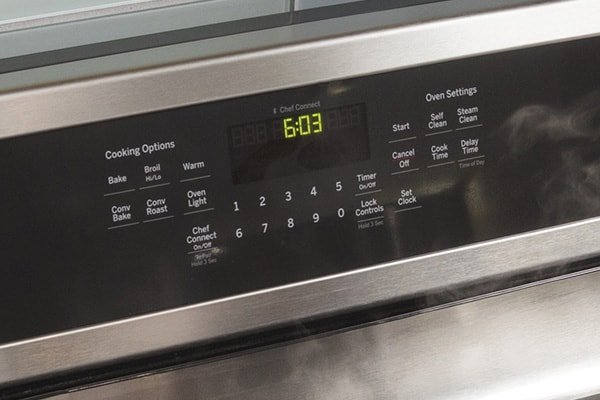
Picture error codes as your oven’s way of talking to you—like when your car’s check engine light comes on. It’s a signal that something’s off and needs your attention. The E2 error code specifically relates to a problem with the temperature sensor. This is the little device in your oven that ensures your cakes bake evenly and your roasts cook to juicy perfection. When it goes on the fritz, it’s like having a thermometer that can’t decide if it’s hot or cold.
Understanding the E2 Error Code
So, what exactly is going on inside your oven when this mysterious E2 code pops up? Well, the E2 error code is typically an indication that there is an issue with the oven’s temperature sensor or its connectivity. Think of the sensor as the brain of your oven’s heating operations—when it’s not working right, the oven can’t regulate its temperature accurately.
Imagine trying to bake cookies with a thermometer that swings wildly between hot and cold. That’s essentially what’s happening here. The sensor might be sending mixed signals to the oven, causing it to overheat or underheat, which can lead to burnt cookies or an undercooked soufflé. While this might sound alarming, most of the time, it doesn’t mean your oven is about to combust. Rather, it’s a cue to step in and troubleshoot.
In most cases, the E2 error suggests that the sensor might be malfunctioning due to disconnection or dirt and grime buildup. This might be similar to wearing glasses smudged with fingerprints—things aren’t clear, and adjustments are needed. However, it’s also possible for the error to arise from wiring issues or even a defective control board, which is akin to having a loose wire in a string of holiday lights—some might work, while others flicker or stay off.
Is It Safe to Use an Oven with an E2 Error?
Now, here’s the burning question: Is your oven safe to use when it’s showing that E2 code? In general, while the error indicates a technical fault, it doesn’t necessarily mean your oven is hazardous. The primary risk with the E2 code is uneven cooking. Your oven may heat inconsistently, which isn’t ideal for precise cooking but doesn’t pose an immediate danger.
Still, you should tread carefully. Using an oven with a faulty sensor is like driving with a malfunctioning speedometer—you can guesstimate your speed, but it’s not precise. If you notice that your oven isn’t maintaining the right temperature or there’s an unusual smell or sound, it’s best to err on the side of caution and avoid using it until you get the issue resolved. Additionally, if the error persists and the oven doesn’t heat at all, it’s time to seek professional help.
For those rare instances where the E2 error is a symptom of a larger electrical problem, safety becomes a bigger concern. If your oven is tripping circuit breakers or causing electrical shocks, stop using it immediately and contact a technician.
Troubleshooting and Next Steps
You’re probably wondering, “What can I do about this pesky E2 error?” The good news is that there are some simple steps you can take to try and resolve the issue before calling in the pros. Start by turning the oven off and unplugging it. Let’s give it a moment to reset—think of it as rebooting a computer that’s acting up.
Next, consider checking the sensor for cleanliness and a secure connection. Sometimes, a gentle cleaning can clear up any residue causing the malfunction. If the error persists, it might be time to replace the sensor. DIY enthusiasts can often handle this with the right tools and guidance, but don’t hesitate to call a technician if you’re not comfortable tackling it yourself.
Ultimately, if you’ve gone through these steps and the error is still there, calling a professional is your best bet. They’ll have the know-how to diagnose and fix more complex issues, like wiring problems or control board defects. And remember, keeping your oven clean and regularly maintained can prevent similar problems from popping up in the future, ensuring you can keep creating your kitchen magic without any interruptions.